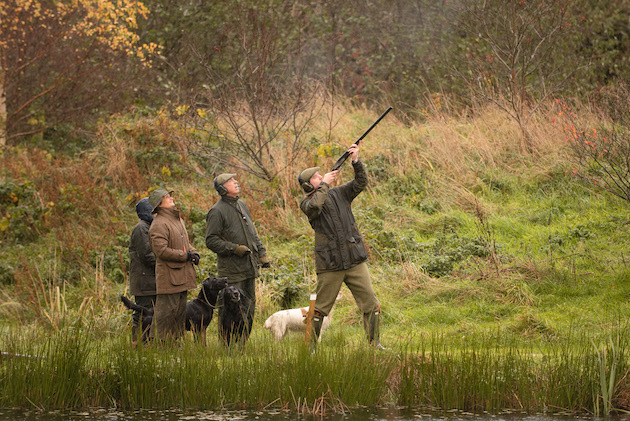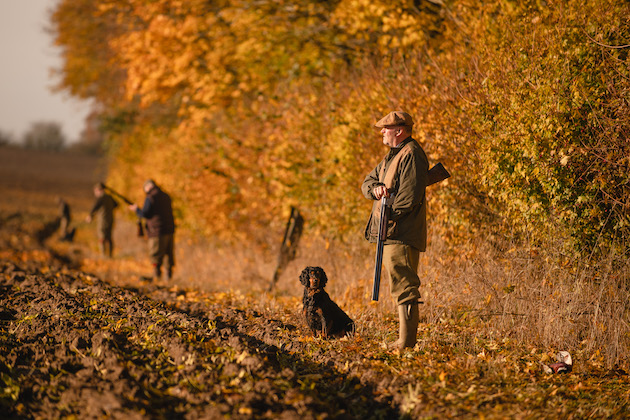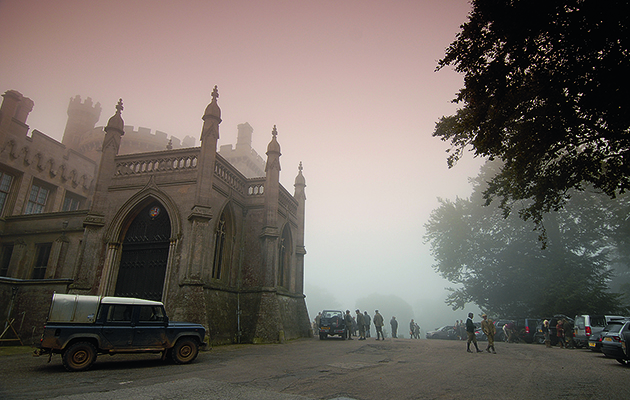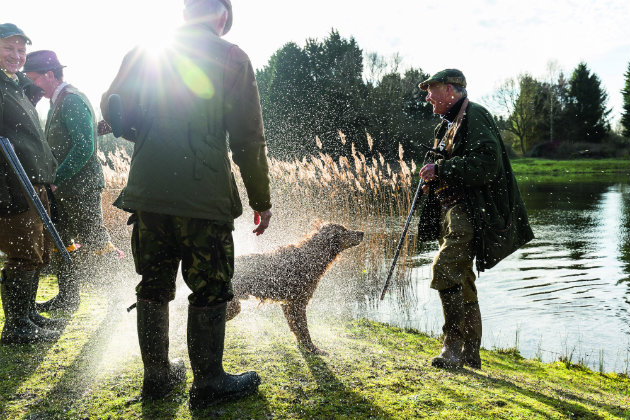Shooting Times visits the Port Loughan shoot and reports back
Patrick Galbraith heads across the Irish Sea to a Purdey award-winning shoot and finds some fine pheasants in torrential weather

The Sandfords' shoot is a real family affair
Somewhere in front of us, across the Irish Sea, I was told there was an extraordinary view, but torrential rain and a biting, squally wind had reduced visibility to no more than 100 yards.
David Sandford was not pleased. He is a man who quite rightly is tremendously proud of what he’s achieved on his pioneering shoot in County Down and this was a far cry from the sort of day to show it at its best.
Three years previously — reportedly in rather better weather — David had welcomed another set of English visitors who were interested in his shoot. “We were very lucky when the Purdey judges came, they actually saw a wild covey of English partridges,” he recalls.
As far as David is aware, the group of greys that scuttled off into the verge that day “was the first instance of the birds breeding successfully in Northern Ireland” since they were officially declared extinct as a breeding species in 1992.
The journey to revive native partridges on the Sandfords’ 220-acre farm at Port Loughan started in 2014, when David retired and was looking for a project. “I’ve been a shooting man all my life,” he said over a cup of coffee by the fire in his old barn, “and I decided it was time to put something back.”

Ponds and woods give a relatively small patch great character
Truly wild
Many decades ago, David remembers standing in the yard and watching a strong covey of Englishmen lift and whistle away over the fields. It was the last time David saw truly wild greys at his home and he says, wistfully, that the scene has been painted in his mind ever since, inspiring him to try and restore what was lost.
Given the bird’s extinct status, he had to get permission from the Northern Irish equivalent of Natural England to reintroduce the greys and it was only granted after the GWCT assessed David’s ground and decided he wasn’t on a hiding to nothing.
The Purdey judges were delighted by what they saw and the Port Loughan shoot won a gold award in 2016. While it is easy to get fixated on grey partridges, David feels that those were really just that “little bit on top”. Ultimately, the judges were impressed by 25 years of habitat improvement coming to fruition: “All the planting for the pheasants, the three ponds we’ve dug, and the crops we’ve put in, have all worked,” he said with a smile.
Our conversation was cut short by David’s neighbour, Brian, coming in from the storm. In no particular order, Brian is a keen Shooting Times reader, president of the Irish Water Spaniel Association, and the 6th Baron Dunleath.
Over the next 20 minutes, the barn filled with shivering Guns, beaters and pickers-up who had braved the flooded roads to get to Port Loughan to shoot pheasants. During the safety briefing, David announced there would be a £100 fine for anybody who shot one of his beloved greys.

David’s black Labrador Archie doesn’t flinch at a water retrieve in the rain
Grandeur
While Port Loughan certainly isn’t big, there is a feeling of grandeur about the place, with mature mixed woodland set in rolling parkland dotted with ponds. On the first drive, I was sharing a peg with Shane Cooke, a Belfast man, who was some years above me at school in Scotland.
In spite of the conditions, David’s son, Mark — who was looking after the beating line — managed to show some exceptional birds. Out to our left, Marcus Maxwell was dropping pheasants into a pond, which provided some fine water retrieves for the dogs, while further down the line, Brian Dunleath was making light work of a steady stream of exceptional birds that were curling upwards to break down to the shore.
I have always liked shoots where each drive differs greatly, in terms of scenery and topography, from the one before. Port Loughan is an excellent example of that.
On the second drive, I was standing almost on the end of the line with a good view of everybody below. With some artful direction, Mark corralled the birds from one bit of wood to another, then pushed them into the wind in such a way that they spread out to give everyone a bit of shooting.

Peg sharing meant that the Guns didn’t have to endure the weather alone
Buffeted
As is so often the case, I was letting myself down with my first barrel but was having better luck with the second. One memorable hen bird, most likely shot in the lung, seemed to flutter a while in the air before being buffeted backwards some 50 yards by the biting wind.
Everybody walks at Port Loughan, which, even on foul days, makes the most of the rich scenery. On the way to our next peg, where Shane was shooting, we saw snipe break from various patches and an Irish hare with its little ears bolted away across the sodden ground.
Even with Mark’s fine direction of the line, the pheasants on the third drive didn’t think much of the idea of flying. We saw no action down our end, apart from a pair of mallard that were struggling through the storm, where the plough rolls out into brackish salting.
“They were certainly in range,” a picker-up chastised us in a jovial Ulster brogue, as we wandered to the final drive before lunch.
After getting lost — which is a testament to how many little copses and woods David has planted — I made it to the middle of the line and shot a particularly satisfying hen bird, which crashed into a thick plantation behind us.
At that point, Brian announced that he was plotting a revolt: it was too cold and too wet, and he didn’t fancy coming out after lunch. David decided the best course of action was to shoot one final drive before we all piled into the barn and attempted to thaw out and restore some feeling to our hands.
In many ways, I much prefer sharing a peg to being by myself. Sure, you get a bit less shooting but it’s good to have company and there’s much pleasure in seeing someone else shoot well. While we were midway through a conversation about waterproofs, a cock bird appeared from nowhere and was past Shane’s head before he had time to get on to it.

Brian Dunleath’s quick reactions are called upon at Osier Garden
After that, much to the irritation of two swans, Shane found his rhythm and started dropping pheasants that broke from a wood on our right into a pond next to us.
Ten or 11 birds later, the horn went and we headed for lunch. Having changed everything, down to my boxers, I stood by the fire and asked David if he thinks that shooting in Northern Ireland has more support from the public and politicians than it does in England.
“There’s quite a strong lobby,” he reflected. “Quite a few of the politicians shoot and anything that’s ever come up in terms of opposition to snaring or anything like that has been firmly pushed back.”
Fieldsports seasons in Ireland
Pheasant season extended to make up for cold weather
Support
It’s hard to pinpoint why our sport gets the love it deserves across the Irish Sea but I wonder if it’s because there’s more rough, walked-up and wild bird shooting practised, which the public are more inclined to support. Some months ago, a Northern Irish gundog trainer said, slightly provocatively, that “shooting in Northern Ireland is often proper hunting”.
As I left later that afternoon, I thought about David’s final comments on partridges. He is very frank about the fact that the farm at Port Loughan might not be big enough ever to support a truly self-sufficient population of wild greys. But he hopes that, in years to come, farms across the country will join together in clusters to collaborate on conservation initiatives that will allow the birds to thrive.
That evening, while I watched Northern Ireland get smaller and smaller from the window of the aeroplane, I found myself dearly hoping that one day I would return and find that David’s ambitions had been realised.









